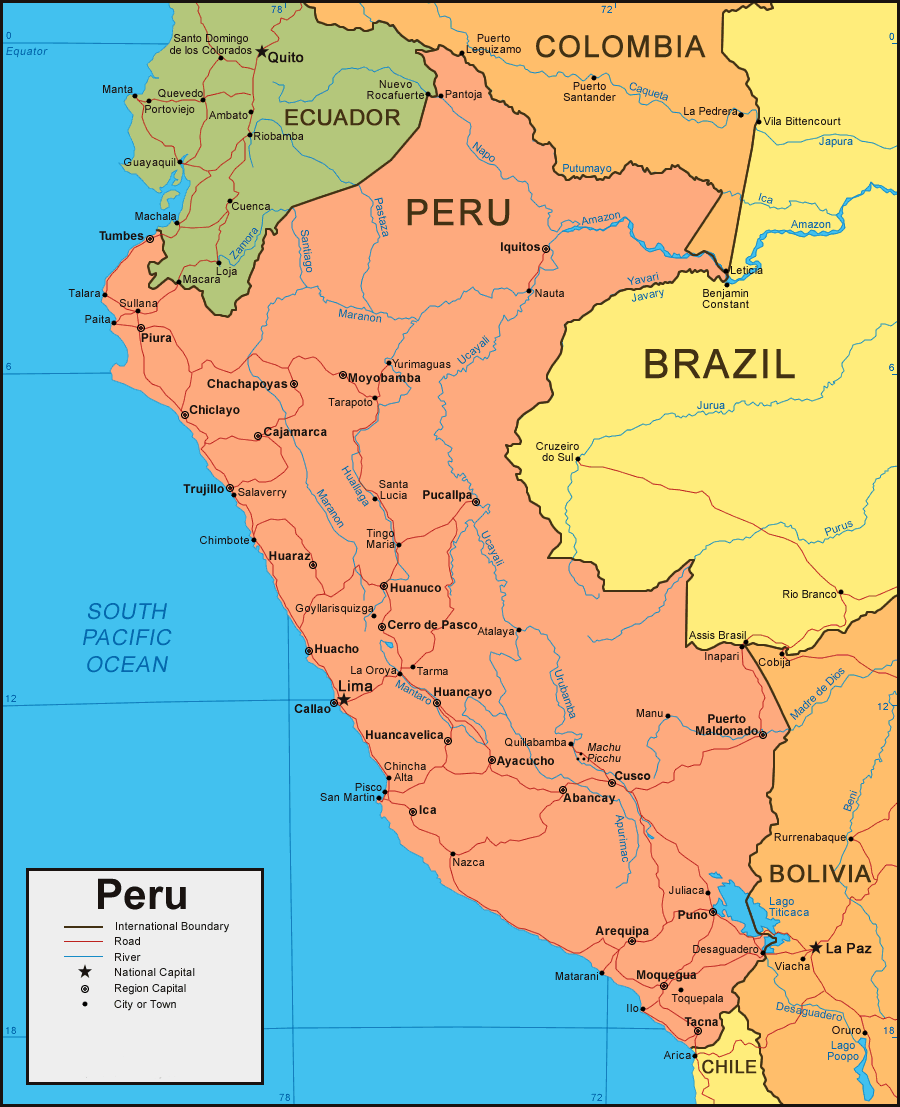Environmental Emergency in Peru | 24 Jan 2022
For Prelims: Oil Spill, Bioremediation, National Oil Spill Disaster Contingency Plan of 1996, International Maritime Organization (IMO), Bunker Convention.
For Mains: Environmental & Economic Impact of Oil spill, Bioremediation.
Why in News
The Peruvian government declared a 90-day “environmental emergency” in damaged coastal territories, after an oil spill that saw 6,000 barrels of crude oil pour into the sea.
- The spill was caused by freak waves, which resulted from the eruption of a volcano in Tonga.
- The oil spill came out of a tanker belonging to the Spanish energy firm Repsol. The incident occurred at the La Pampilla refinery, some 30 kilometers north of the Peruvian capital of Lima in the Ventanilla district of the port city of Callao.
Key Points
- About Freak Waves:
- A freak wave or rogue wave is usually defined as a wave that is two times the significant wave height of the area.
- The significant wave height is the average of the highest one-third of waves that occur over a given period.
- Rogue waves can disable and sink even the largest ships and oil rigs.
- These so-called “freak waves” are not confined to the Atlantic Ocean or North Sea.
- One of the places rogue waves appear to happen most frequently is off the southeast coast of South Africa.
- Oil Spill:
- About: An oil spill refers to any uncontrolled release of crude oil, gasoline, fuels, or other oil by-products into the environment.
- Oil spills can pollute land, air, or water, though it is mostly used for oceanic oil spills.
- Major Causes:
- Oil spills have become a major environmental problem, chiefly as a result of intensified petroleum exploration and production on continental shelves and the transport of large amounts of oils in vessels.
- Oil spills that happen in rivers, bays and the ocean most often are caused by accidents involving tankers, barges, pipelines, refineries, drilling rigs and storage facilities.
- Environmental Impacts:
- Threat to Indigenous people: Oil pollution poses health hazards for the indigenous population who depend on seafood.
- Harmful to aquatic life: Oil on ocean surfaces is harmful to many forms of aquatic life because it prevents sufficient amounts of sunlight from penetrating the surface, and it also reduces the level of dissolved oxygen.
- Hypothermia: Crude oil ruins the insulating and waterproofing properties of feathers and fur of birds
- Thus, oil-coated birds and marine mammals may die from hypothermia (decrease in body temperature to below-normal levels).
- Toxic Effects: Moreover, ingested oil can be toxic to affected animals, and damage their habitat and reproductive rate.
- Threat to Mangroves: Saltwater marshes and Mangroves frequently suffer from oil spills.
- Economic Impacts:
- Tourism: If beaches and populated shorelines are fouled, tourism and commerce may be severely affected.
- Power Plants: The power plants and other utilities that depend on drawing or discharging sea water are severely affected by oil spills.
- Fishing: Major oil spills are frequently followed by the immediate suspension of commercial fishing.
- Remedies:
- Bioremediation: Bacteria can be used to clean up oil spills in the ocean through bioremediation.
- Specific bacteria can be used to bioremediate specific contaminants, such as hydrocarbons, which are present in oil and gasoline.
- Using bacteria such as Paraperlucidibaca, Cycloclasticus, Oleispira, Thalassolituus Zhongshania and some others can help remove several classes of contaminants.
- Containment Booms: Floating barriers, called booms, are used to restrict the spread of oil and to allow for its recovery, removal, or dispersal.
- Skimmers: They are devices used for physically separating spilled oil from the water’s surface.
- Sorbents: Various sorbents (e.g., straw, volcanic ash, and shavings of polyester-derived plastic) that absorb the oil from the water are used.
- Dispersing agents: These are chemicals that contain surfactants, or compounds that act to break liquid substances such as oil into small droplets. They accelerate its natural dispersion into the sea.
- Bioremediation: Bacteria can be used to clean up oil spills in the ocean through bioremediation.
- Related Laws in India:
- Presently, there is no law covering oil spill as such and its consequential environmental damage in India but India has “the National Oil Spill Disaster Contingency Plan of 1996 (NOS-DCP)” to handle such situations.
- The document was issued by the Ministry of Defense in 1996, it was last updated in March 2006.
- It gives the Indian Coast Guard the mandate to coordinate with state departments, ministries, port authorities and environmental agencies to assist in oil spill cleaning operations.
- In 2015 India ratified the International Convention on Civil Liability for Bunker Oil Pollution Damage, 2001 (Bunker Convention).
- Convention ensures adequate, prompt and effective compensation for damage caused by oil spills.
- It is administered by the International Maritime Organization (IMO).
- Presently, there is no law covering oil spill as such and its consequential environmental damage in India but India has “the National Oil Spill Disaster Contingency Plan of 1996 (NOS-DCP)” to handle such situations.
- About: An oil spill refers to any uncontrolled release of crude oil, gasoline, fuels, or other oil by-products into the environment.

